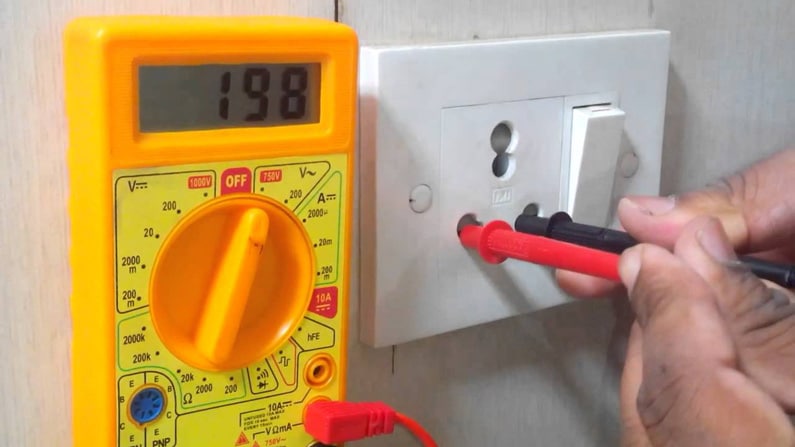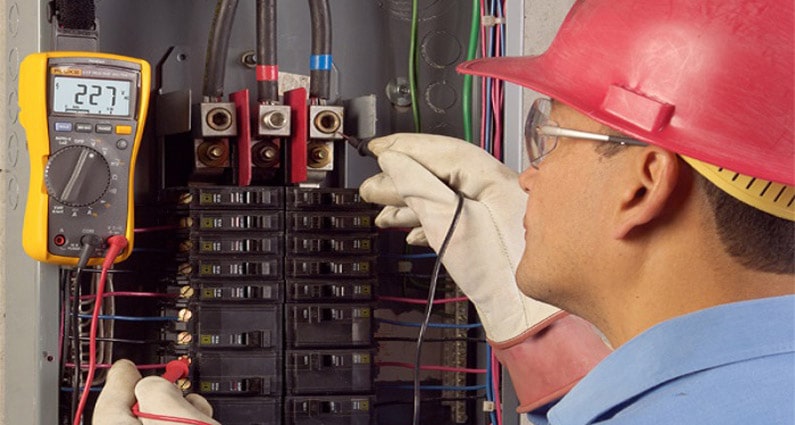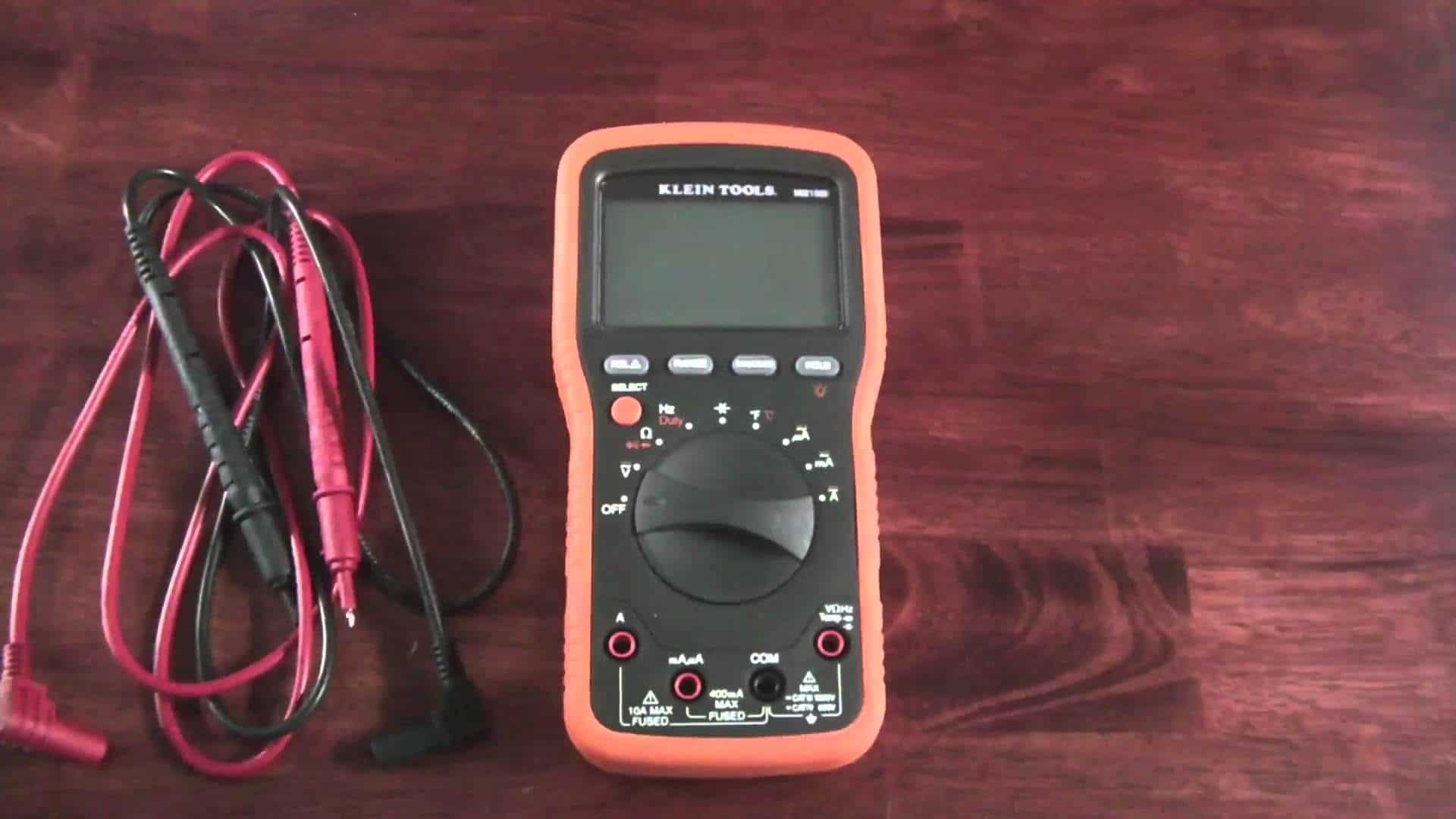Many people think they aren’t in immediate danger due to low voltages or amperage, but you can rest assured that there is a certain risk involved, especially if you don’t utilize the unit properly and by the rules.

Inspection of the Unit
Before you even start using a particular unit, make sure to take a moment and check it out first. Look for signs of physical damage, cracks, leaks, or anything that could jeopardize the accuracy of the results as well as your own safety.
One should never assume that the unit is working properly. In other words, you should always check the multimeter on a known voltage source before working with high-current circuits. This step allows you to confirm that the unit is working as intended. In case you get false readings from a known source, it is a good indicator that something is wrong. Needless to say, don’t utilize a faulty model on an unknown source, especially if high voltages are in question.
Also, when not in use, make sure to keep the multimeter in its protective case along with the test probes.
Inspection of the Probes
The functionality of the leads is as important as the functionality of the multimeter. If one of the two probes (or both) is faulty, there is a high risk of injury involved, especially under high voltages. That’s why it’s crucial that you test the probes before using them on an unknown source.
The first step is to unplug the probes and inspect for physical damage. One must also verify that they are shrouded and that the rubber cover isn’t cracked or broken. Once the leads are inserted back into the ports, the connection between the jacks and the probes should feel reliable and trustworthy.
When utilizing test probes, make sure not to touch any exposed metal parts on them. A lot of modern units come with shrouded leads that only feature a small metal exposure instead of being like a big needle. Make sure the leads are properly insulated and aren’t damaged.
One should also never try to repair damaged test leads. They are not foreseen for repairs and should be thrown away as soon as they get damaged.

How to Avoid Shocks?
Here are some of the guidelines you should follow in order to avoid unexpected shocks.
The first thing you should always assume is that every electrical component within a circuit is energized. A lot of people fail to oblige this rule and a large percentage of them suffer the consequences.
Now, the damage doesn’t need to be massive in order to mess up with your readings. It only takes a small error, and everything will probably go downhill from there. That’s why it’s important for you to stay focused and think about every aspect of your project or else things might not go as planned.
A shock can occur if your body becomes a part of the circuit. It’s a fairly simple principle, yet many users tend to forget about it. Shocks don’t always have to be fatal; it depends on few factors such as the intensity of the current, length of time the body spent as a part of the circuit, area of exposed contact, and more.
The Equipment
As you may know, safety equipment is one of the primary things you should be concerned about. In other words, one should always wear protective gloves, headwear, insulated mats, and other on-body and near-body equipment. If you’re ever exposed to an electrical circuit greater than 50V – wearing safety equipment is mandatory.
One should also never work alone when it comes to messing with electricity. Having a partner by your side is a great advantage because they can react accordingly if something goes wrong. More often than not, people can’t be treated adequately due to them being alone and incapable of asking for help promptly.
Avoid working in humid areas. While it may not be an immediate thread, humidity can have a negative effect both on your readings and your safety. As we all know, water and electricity don’t mix well together and those situations should be avoided at all times. Even if you’re in a hurry and can’t wait for another opportunity, please refrain from utilizing multimeters in damp environments.

Understanding the CAT ratings
Every unit features a particular CAT rating. It’s very important for you to know what these labels mean in order to choose the right tool for the occasion. The general rule of thumb here is to always choose the tool with the highest category rating in which you are planning on using it.
A CAT rating refers to the maximum spike of energy a particular model can withstand. In general, the closer you are to the source, the rating will be higher. Therefore, outdoor conductors are rated as CAT IV because they are in danger of getting struck by lightning and therefore send a massive spike of energy through.
Useful Safety Advice
When measuring resistance, make sure you exclude the component from the circuit or else you’ll get false results. If it’s not possible to take the component out, make sure that the capacitors in the circuit are completely drained out. Be extra careful around capacitors because they can hold a significant charge and even cause some injuries, depending on the overall capacity ratings.
If your unit doesn’t feature auto ranging, make sure you find and select the appropriate range yourself. In case you don’t know how to do it, refer to the user manual. However, if you select a lower range, the unit will display a value of 1. That means that the reading is out of the selected range and should be fine-tuned accordingly.
Inserting the leads into a wrong port can lead to a short circuit within the multimeter, especially if you measure voltage. It is of utmost importance that you set up everything correctly before conducting measurements because most errors lead to unfavorable scenarios that can sometimes be fatal.
When dealing with AC, make sure the unit is selected for AC measurements. While it doesn’t sound like a massive oversight, an error in selecting the right parameters can lead to severe consequences, especially for the unit itself.
When you are finished with the readings, turn the knob to the OFF position. If the model doesn’t have an OFF position, turn the knob to the highest value on the scale. This is done so that the next person doesn’t jeopardize the integrity of the multimeter by measuring high values while using a sensitive (small) scale.

Worst Case Scenarios
These are some of the things that could happen to a person who didn’t take all precautionary measures prior to utilizing a multimeter. Bear in mind, these are all hypothetical occurrences and most of them are, as the heading suggests, a worst-case scenario. However, in order to avoid such things, one must first be aware of them.
A lightning strike can cause a transient on the main power line. That occurrence creates an electrical arc between the terminals within the multimeter itself. As we previously noted, the most important thing here is the CAT rating. In case one uses a unit with the wrong rating, the circuit inside the multimeter will fail and possibly break beyond repair.
The aforementioned arc can reach incredible temperatures of over 5000 degrees Celsius. If one reacts naturally and pulls the probes out of the source, the arc can get drawn as well and cause serious injuries to the user.
As you can tell, it’s of utmost importance that you comprehend the features of every CAT rating available so that you can avoid unpleasant scenarios.
The Conclusion
More often than not, people simply decide to ignore a lot of safety precautionary measures. It’s especially common in situations when dealing with low voltages, amperage, and etcetera. Needless to say, the low values don’t necessarily indicate low risks. It’s not something that grows proportionally by any means. Instead, one should always be aware of the dangers as that helps them stay focused and vigilant.
There are plenty of models available on the market today. Anyone who recommends one as the best is probably wrong as it does take a lot more than just the visual appeal and auxiliary features. Things like ratings, scale sensitivity, design, reliability, and trustworthiness, are also quite important and should be taken as relevant.
Don’t buy the first model you stumble upon, regardless of how expensive and cool-looking it is. Instead, take a moment and check its features, CAT rating, quality of the probes, and more. Don’t rush the purchase because the less you care about the things under the hood, the more you increase the risk of something going wrong.










